Reviews
Victor Sjöström
USA, 1928
Credits
Review by Megan Weireter
Posted on 25 February 2009
Source TCM broadcast
Categories The Silence After Sound: Hollywood’s Last Silent Movies
The Wind doesn’t just demonstrate the power of silent cinema, it actually proves that sometimes a silent is more effective than a talkie would be. Here the silence heightens the building emotional claustrophobia that’s so crucial to the film, as if even the characters’ voices - along with their humanity - are smothered by the wind. Of course, it helps that everything else about the film works so well, too. It’s easy to see why Lillian Gish made this film her pet project (she brought it to MGM and picked out Swedish director Victor Sjöström and Swedish leading man Lars Hanson personally). For all that the wind blows and blows and blows across the west Texas plain, the real drama and brutality unfold at the human level, and Gish and Hanson both get ample opportunity to show off their acting chops.
The difficulties the cast and crew encountered making this film are legendary. It was shot in the Mojave desert, where the temperature routinely rose to 110° Fahrenheit, and the wind was created by huge noisy airplane engines that had been hauled in to roar and blow nonstop. Everyone was hot and dusty and near-deaf and miserable. Lillian Gish once grabbed a doorknob that was so hot from being in the sun that she literally burned a layer of flesh off her palm. Still, though, Gish considered The Wind one of her favorite films, and the horrendous conditions it was made in only contributed, no doubt, to the film’s turbulent mood. There’s nothing subtle about The Wind—in its dramatic intensity and bleak natural setting, it’s practically Wuthering Heights in Texas.
Letty, our beautiful heroine, has left her home in Virginia for unexplained reasons to live with her cousin Beverly and his wife Cora deep in west Texas. On the train out she meets a flirty man named Wirt, whom she instantly develops a crush on. From there it’s downhill, though, as she’s picked up - her impractical hat flapping sadly in the wind - by Lige and Sourdough, her cousin’s neighbors, a pair of lecherous hicks who flip a coin to see who gets to sit next to Letty on the ride home. All three of these men tease her about how the wind in these parts usually drives the ladies mad. And indeed, the wind never stops once during the film - even the score features a near-constant undercurrent of windy music.
Eventually Letty is taken to the home of her cousin, who for his part seems glad to see her. Grumpy Cora and her creepy, joyless children, though, could hardly be less glad to see her, as Cora suspects the worst about Letty’s relationship with Beverly. Letty’s sweetness eventually overcomes the objections of the children, but that just makes Cora all the more determined to get rid of her.
At a country dance, Letty actually receives three proposals—one from Wirt, whom she meets up with again, and one each from Lige and Sourdough, who propose to her jointly so she can choose between them, which she takes as a joke. It’s Wirt she wants, but unfortunately, it seems the sleaze already has a wife somewhere or other. So when Cora finally does force her out of the house, leaving her with nowhere else to go, Letty is resigned to marrying Lige.
Clearly it’s not just the wind that batters Letty about. Every other character manages to physically overpower her—she is rarely in a scene with another character when she isn’t being grabbed, pushed, or screamed at. Though she’s a beauty and a heartbreaker, pursued by three men, she never even has a bit of sexual power over them. Even her arrival in Texas seems without reason, as if it’s what someone else had decided for her. This isn’t a women who can withstand much of anything, and certainly not these relentless winds that menacingly throw dust up against the tiny cabin windows. A scene during the dance says it all: a cyclone flares up, and the people all retreat to the cellar for safety. Letty has been dancing with Wirt, and he all but grabs her and hauls her down the stairs along with the giant crowd pushing around them. The force of the crowd here is at least as strong as the force of the wind—one couldn’t break free from it if one wanted to. But among the crowd, there are Letty’s huge eyes and disconsolate face, already on the brink of madness.
The first time Letty expresses any frustration at all, it’s at Lige, who tries to consummate their marriage with an awkwardness that’s painful to watch. The entire scene here is beautifully done: Lige, suddenly shy with his new wife, offers her a sludgy cup of coffee, which she sniffs with disgust before dumping it into her washbasin while he’s not looking. He leans in to kiss her, and she primly recoils, until Lige gets just a little too aggressive, leaving Letty to run from him and scream, “Don’t make me hate you!” This makes it sound very melodramatic, I know, but the actors are so good here that you can barely breathe watching them. Their every movement is fraught with meaning. It’s a tricky thing happening—Lige’s character is transitioning from comic relief into a true romantic lead. Watching Letty crush his spirit with her indifference is stunning because, for the first time, it’s not at all played for laughs. At the moment when Lige realizes that Letty really doesn’t love him, his face falls, and your heart breaks. Then somehow the moment when he leans over her washbasin and sees that she poured out the coffee is even worse. The camera lingers on every crinkle of despair in his face.
So this complicates things—we want Letty to assert herself, but we suddenly, unexpectedly, also care deeply about Lige’s feelings. Lige honorably agrees never to touch her, and to send her away as soon as he has the money to do so, but in the meantime she keeps house for him, vainly attempting to sweep away the dust the wind blows in. At the height of one great windstorm, the men must go out to round up horses, and Letty’s fear of the wind is such that she begs Lige to let her come too. When he doesn’t, she chases after him and would be lost in the mess of wind if not for Wirt, who not only saves her life and drags her back home, but tries to rape her. By now, though, a demented Letty can’t stand being at the mercy of the outside world any longer, and she shoots Wirt, leaving his body outside for the wind to bury under dust in one of the more grotesque scenes. It’s unclear, actually, whether or not Letty is hallucinating this, as at this point she’s practically clawing at the windowpane with madness. The long shot of her crazed eyes looking out over the windowsill is mesmerizing here.
This is where, had the movie gone according to plan, Letty would wander off outside, those gigantic Lillian Gish eyes as big and white as dinner plates, and be smothered to death by the wind herself. That’s how the novel the film is based on ends (more reminiscent of The Awakening than Wuthering Heights ultimately, if I’m to keep comparing this to gloomy novels), and it’s the ending that Sjöström shot originally. But here’s where The Wind gets a little silly—a happy ending is tacked on, and all of a sudden Lige comes back, and Letty loves him, and she’s no longer crazy, and she’ll never be scared of the wind again. The end. The happy ending literally unfolds that quickly, the epitome of an afterthought. MGM demanded a happy ending, fearing that Gish already had too much of a history of doing downers (she and Sjöström had just done The Scarlet Letter together previous to this film) and that audiences would never want to see Gish flinging herself to the elements anyway. And despite the consternation of everyone involved with the making of The Wind, MGM wouldn’t compromise. The happy ending stayed, and Sjöström was so annoyed he refused to ever work in America again.
Thank God for IMDb, honestly, because if you were to watch this knowing nothing about the film, the ending would just piss you off. It’s so clearly not appropriate to the darkness that’s hung over the entire film. Luckily, thanks to the internet, we can easily learn about the happy-ending crap, write it off as studio-driven stupidity, and appreciate all but the last five minutes as completely masterful. Silent, schmilent—The Wind is one of the best movies I’ve seen lately, silent or not. It’s beautifully acted, impressively shot, and chilling to the bone, a Gothic western, starring unrelenting nature in the form of wind and dust and drabness, and Lillian Gish as its most beautiful, tragic victim.
More The Silence After Sound: Hollywood’s Last Silent Movies
-

Four Sons
1928 -
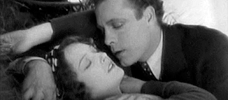
The Crowd
1928 -

A Girl in Every Port
1928 -
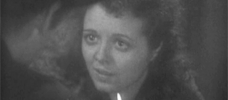
Street Angel
1928 -

The Patsy
1928 -
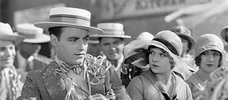
Lonesome
1928 -

Our Dancing Daughters
1928 -
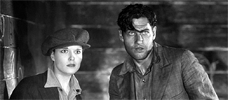
Beggars of Life
1928 -
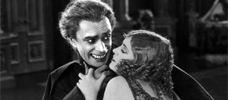
The Man Who Laughs
1928 -

The Docks of New York
1928 -
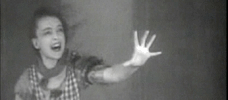
The Wind
1928 -
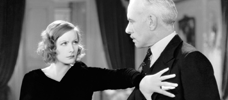
A Woman of Affairs
1928 -
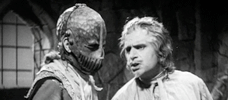
Iron Mask
1929 -
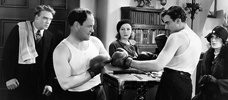
The Single Standard
1929 -

City Girl
1930 -

The Wedding March
1928
We don’t do comments anymore, but you may contact us here or find us on Twitter or Facebook.



